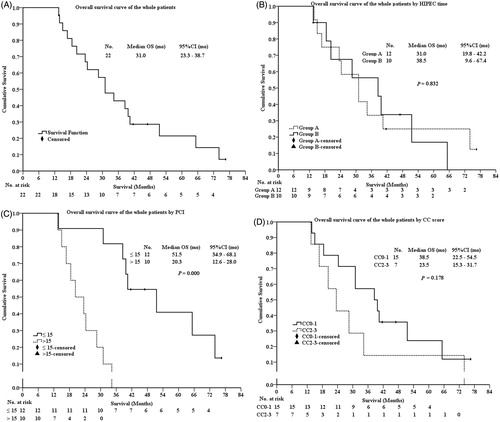Figures & data
Table 1. Major clinico-pathologic characteristics of the 22 PPSC patientsa.
Table 2. Major clinico-pathological parameters, treatment course and outcome information of the 22 PPSCa.
Table 3. The overall survival information from different studies for primary peritoneal serious carcinoma.


